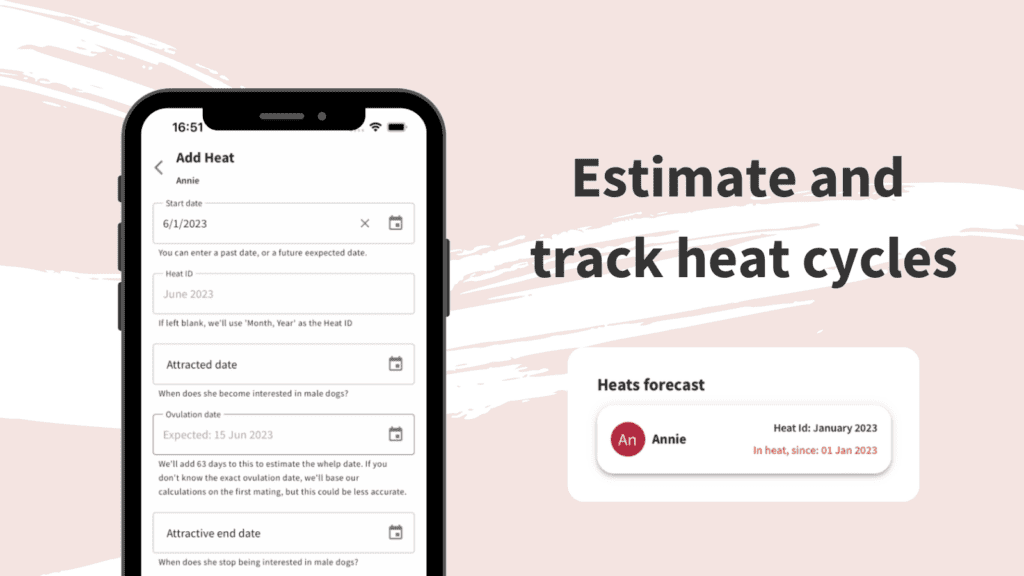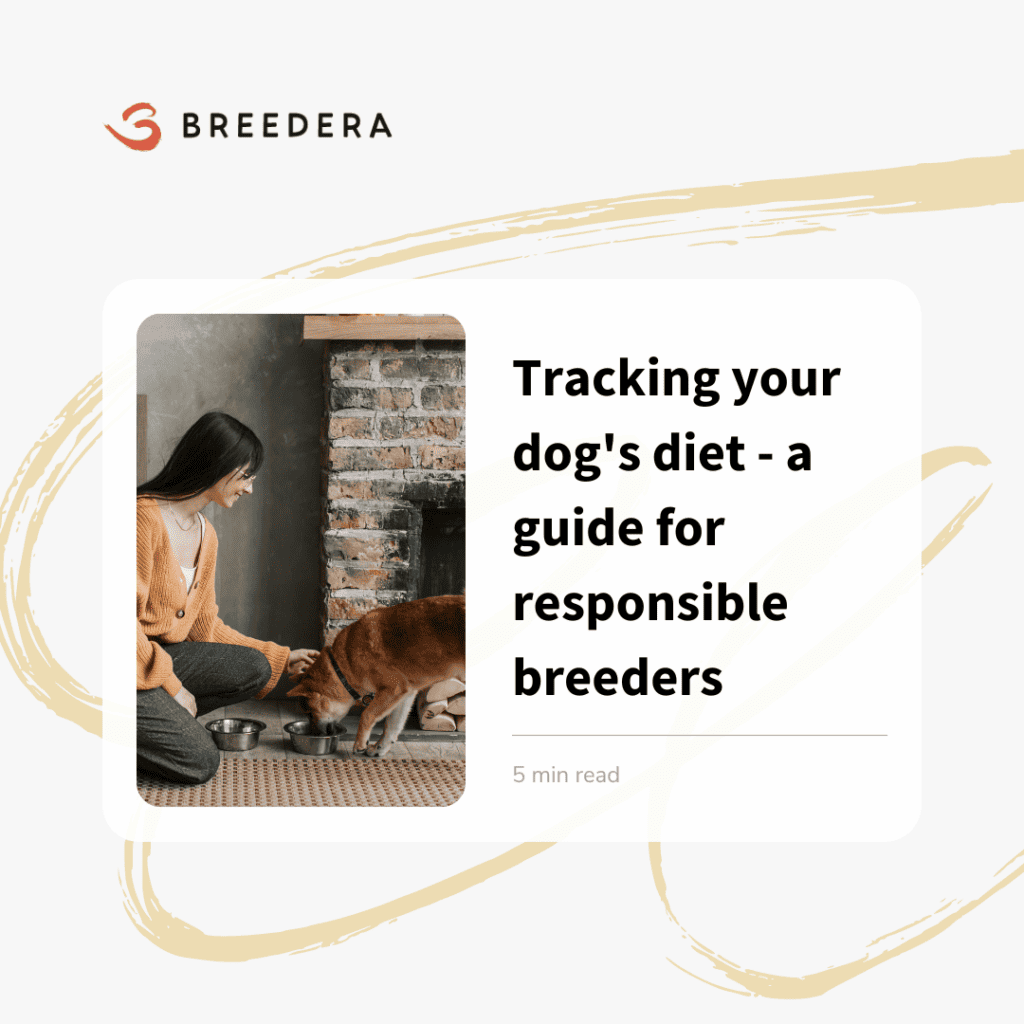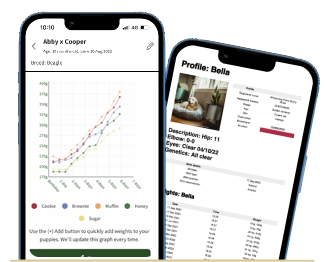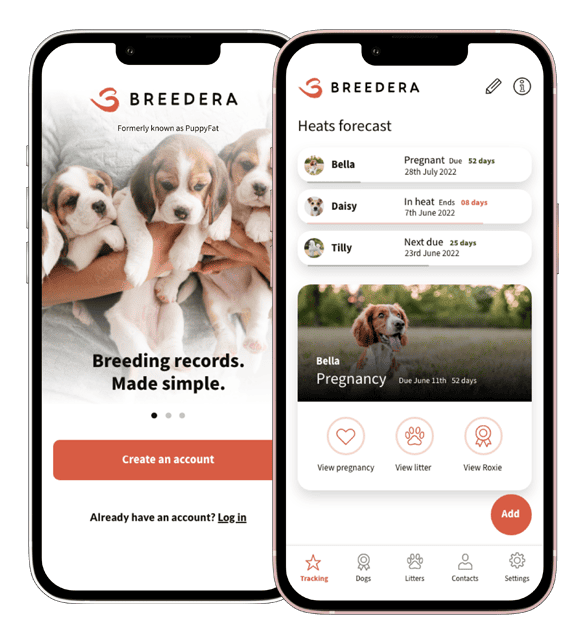In this article
For breeders, it’s essential to be aware of your dog’s heat cycle and what can affect it for two reasons: it’s crucial for successful matings and to prevent unwanted litters.
When a female dog is “in heat”, they’ve entered the fertile part of their reproductive cycle. On average, a dog goes into heat every six to eight months and experiences heat for the first time at about six months old. This part of the cycle lasts around three weeks but varies between different breeds.
As well as timing, other factors may affect a dog’s heat cycle. In this article, we’ll explain the most important factors to be aware of:
Age and reproductive maturity.
Unlike humans, female dogs don’t go through menopause, instead, older dogs will start to experience heat cycles less. This is nothing to worry about and completely normal; it is just a result of the hormones that trigger a heat cycle starting to decline.
There is still a chance for older dogs to experience heat as age will affect each dog differently. If your dog is still going through heat cycles, it’s important to be aware that there is more risk for older dogs to get pregnant.
Breeds and genetic factors.
Heat cycles will differ between different breeds of dog. For example, smaller breeds tend to cycle more regularly than larger breeds. In very large breeds, such as Great Danes and St Bernards, it’s common for them to cycle only once a year. Finding out more breed-specific cycle information is a good way to determine your dog’s cycle.
If you have access to your dog’s family history, this is another great way to determine your dog’s cycle and give you a rough idea of what to expect.
Environmental factors.
A dog’s cycle may also be affected by seasonal changes. For example, your dog’s cycle may be influenced by the days getting longer or shorter, the weather getting colder or hotter. As well as this, consider the environment around your dog.
Are there any changes in the household that could be causing your dog stress?

Tip
You can record notes about your dog’s environment and changes to behaviour in Breedera in your Heat Cycles!
Health and nutrition.
A dog’s health can play a very big role in why they’re not experiencing heat, this can act as an indicator that your dog is experiencing health issues. Conditions such as a tumour developing or hypothyroidism (a thyroid issue) can affect a dog’s heat cycle. Ovarian Hypoplasia is another condition where a dog’s ovaries have not fully developed, meaning they cannot produce enough oestrogen to have a normal heat cycle or, in some cases, to have a cycle at all.
A dog’s diet also needs to be considered. Female dogs that are malnourished from poor diet or a recent illness will, in most cases, not have a heat cycle.
Even feeding your dog low-quality food, which is low in protein can result in your dog missing their heat cycle.

Why is my dog not coming into heat?
The most effective response to your dog not coming into heat is to visit your vet. They will be able to run a full examination on your dog to try and highlight any issues. This may also include tests such as a biochemistry panel, blood count and urinalysis and in some cases, an ultrasound.
A vet will also be able to determine if your dog has experienced a silent heat cycle; this is where your dog still has a heat cycle, just without the normal and more obvious symptoms.
Tracking your dog’s heat cycle accurately
Tracking heat cycles is a crucial part of being a responsible dog breeder.
Closely monitoring heat cycles allows you to:
- Plan ahead and prepare your time and resources to ensure a healthy pregnancy and litter.
- Identify the optimal time for breeding, which reduces stress for your bitch.
- Provide appropriate rest periods for your female dogs.
- Prevent unintended breedings and accidental matings.
Breedera’s heat cycle calculator is a must-have for breeders needing to track their dogs’ heat cycles more accurately and confidently.
With Breedera, you can always keep track of where she is in her cycle with a visual countdown.
What’s more, you can log behaviour changes, test results, veterinary contact details, stud dog details and mating dates/times.

As a responsible breeder, we know you wear many hats to ensure your dog’s health and wellbeing. Managing your own time, planning ahead and staying on top of breeding admin, and looking after your animals, can be demanding.
Breedera is here to support you every step of the way, offering a comprehensive platform that simplifies your administrative tasks and allows you to focus on what truly matters – shaping the lives of our future pets. Together, we can empower you to achieve your breeding goals, create strong bonds with your dogs, and continue your legacy as a dedicated and successful breeder.
Disclaimer:
*The information provided in this article is for general informational purposes only and is not intended to be a substitute for professional veterinary advice, diagnosis, or treatment. The content shared here is based on thorough research, personal experiences and the collective knowledge of the dog breeding community.
While we strive to offer accurate and up-to-date information, the field of veterinary medicine is constantly evolving, and individual cases may vary. Always seek the advice of a qualified veterinarian with any questions you may have regarding your dog’s health or well-being.














By Courtney Farrow
Courtney supports Breedera with all our online content. Specialising in heart-led copywriting for purpose-driven brands, she is passionate about Breedera's mission to make responsible breeding practices easy and rewarding and champion more traceability and transparency in the pet industry.